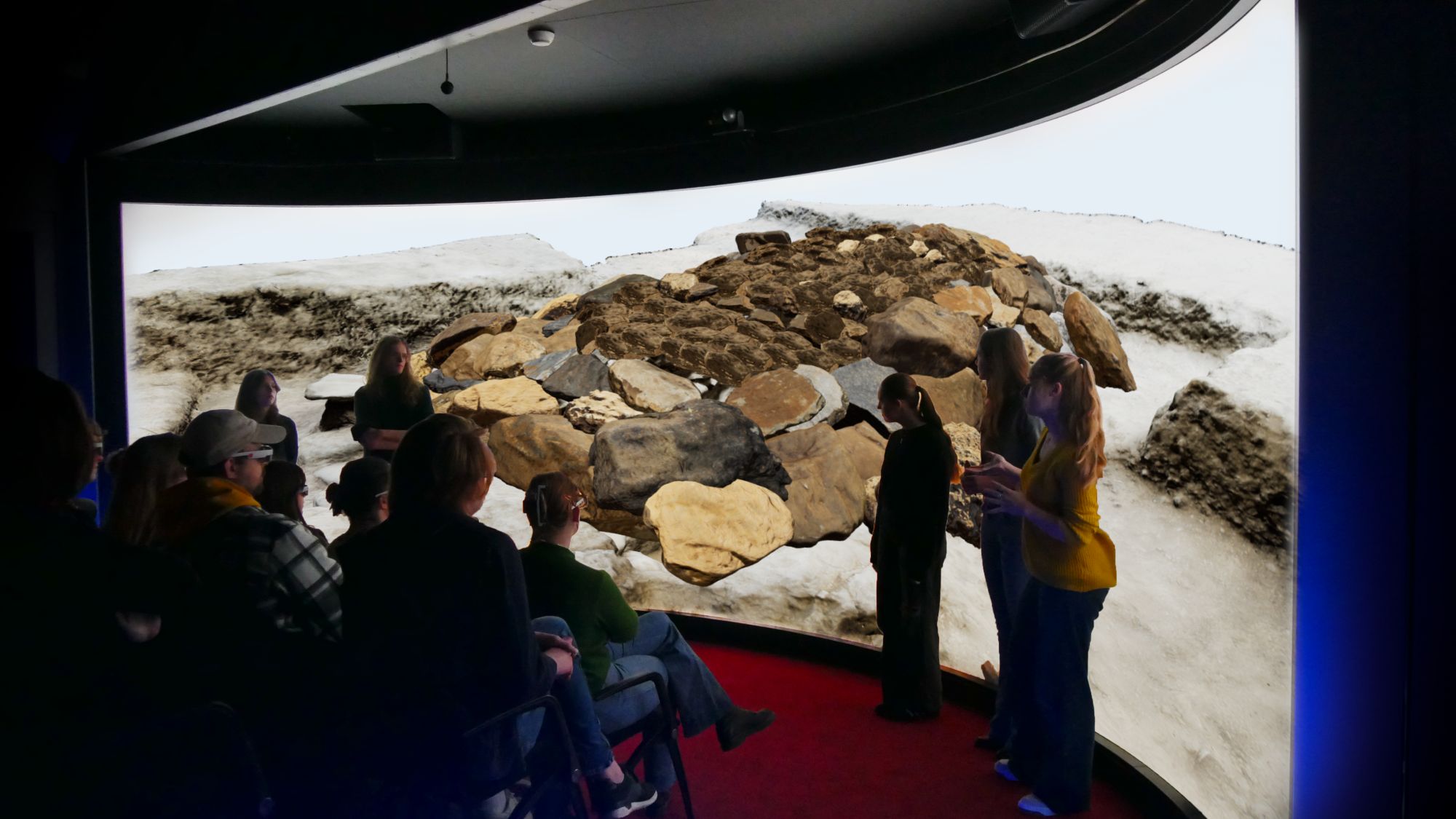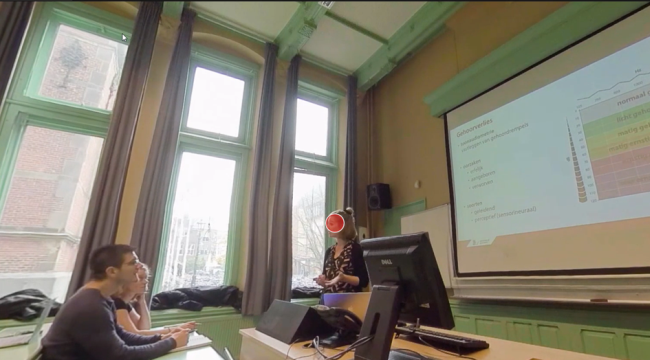XR Hub December 5: Virtual reconstruction of a prehistoric tomb and research into lecture attention via VR
In this edition of the XR hub, UG researchers talk about the application of XR in archeology and the use of VR in research into student attention during lectures.
Sign up
You can sign up by sending an email to realitycenter rug.nl.
Language: English
Program
> Welcome and introduction
> Virtual reconstruction of a prehistoric grave and presentation to fellow students
Professor of Greek Archeology prof.dr. Sofia Voutsaki talks about a new didactic model with XR and 3D technology that has recently become available in the reality center of the UG. The aim of this new teaching model is to better prepare archeology students for what they will encounter in the field. The virtual environment of a prehistoric tomb provides a sensory experience in which they can experiment with the construction of the missing roof of the tomb.

The first step of the didactic model consists of making a reconstruction of the tomb with a missing roof in a small group of 4-5 students. They use real parts of the tomb (found stones) and hypothetical beams, all available in 3D. By trying out the reconstruction in virtual reality, the students can think about construction methods without the obstacle of gravity.
The second step is to present the group solution in 3D in the virtual reality theater to 20 students to discuss the chosen solution strategies. During the presentation it is possible to experience both steps.
> Use of VR in research on attention during lectures and perceptual load
UG researcher Dr. Anja Schüppert of the Faculty of Arts is using VR to investigate how students attend university lectures under different conditions. To make attending lectures as close as possible to real life situations while maintaining data collection under laboratory conditions, the lectures were recorded with a 360° camera.

Participants attended the lectures using a VR headset with built-in eye tracking. The instruction language (Dutch/English) and the participants' seating position in the lecture hall (back/front) were manipulated and the exam results and eye movements during the lectures were analyzed. Finally, the presence or absence of disruptions during the lecture and the participants' reaction to these disruptions provided an impression of the perceptual load of students in different situations.
